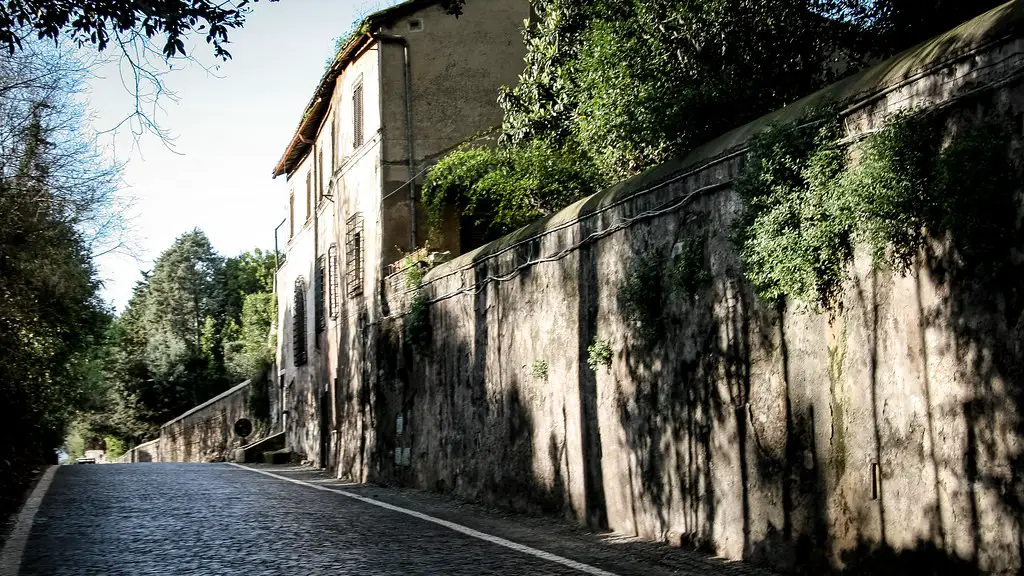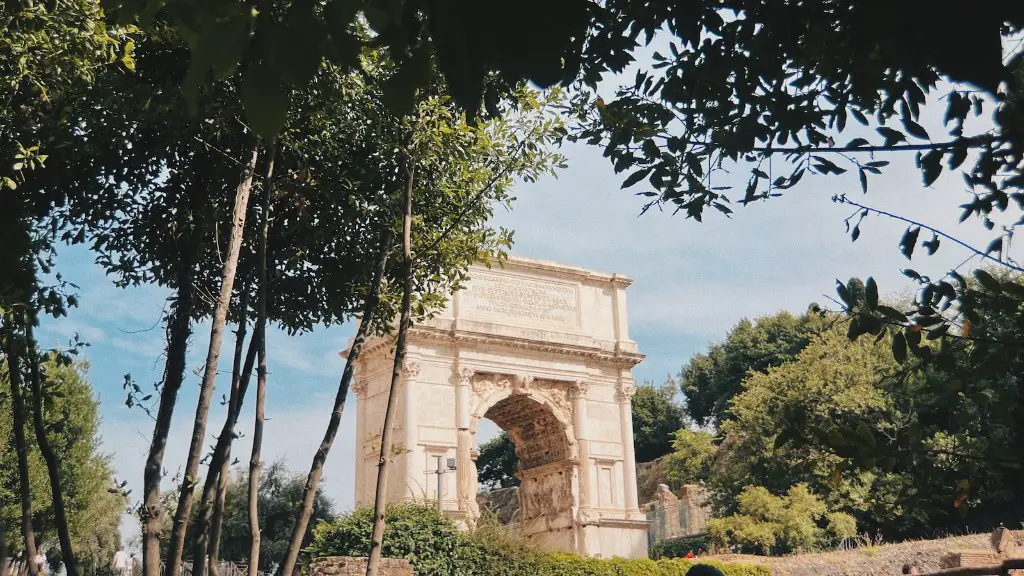The ancient Romans were very clever engineering. They invented concrete and used it to build some of the most impressive structures in the world. Some of these are still standing today. So, what was this magical material made of?
Ancient Roman concrete was a mixture of lime, sand, water, and rocks.
What did the Romans use as concrete?
Roman concrete, like any concrete, is a mixture of an aggregate and a hydraulic binder. The aggregate can be anything from pieces of rock and ceramic tile to lime clasts and brick rubble from demolished buildings. The binder is mixed with water and hardens over time.
The team’s spectroscopic examination of Roman concrete has led them to believe that the concrete was made by mixing calcium carbonate with pozzolanic material and water at very high temperatures – a process called ‘hot mixing’. This ‘hot mixing’ is thought to be the key to the concrete’s super-strength.
How did Roman concrete last so long
Researchers from MIT think they have the answer to Roman concrete’s millennia long success – white specks called lime clasts. Lime clasts are small white chunks which originate from lime, found ubiquitously through Roman concrete but not in modern day concrete. The presence of lime clasts is thought to be the key to Roman concrete’s longevity, as they act as a sort of reinforcement, helping the concrete to resist cracking and weathering. The researchers are now working on developing a concrete mix that includes lime clasts, in the hope of replicating the success of Roman concrete.
The Roman Empire was one of the first empires to make extensive use of concrete in their construction projects. Some of the most famous concrete structures from the Roman Empire include the Pantheon in Rome and the wharves and breakwaters in the empire’s harbors. The use of concrete allowed the Romans to build much larger and more complex structures than would have been possible with other materials.
What is the secret ingredient in Roman concrete?
Aluminum tobermorite is a very rare hydrothermal mineral that forms in concrete. It is long known to give Roman concrete its strength. However, it is very difficult to incorporate it in concrete.
It turns out the ancient Romans had the perfect recipe for water-resistant concrete. The material, called opus caementicium by the Romans, is made from a hydraulic cement, meaning it can set underwater or in wet conditions. This explains why so many Roman structures are still standing today, despite being hundreds of years old.
Why don t we use Roman concrete today?
Ancient Rome was known for its impressive architecture and engineering, which included the construction of massive structures like the Colosseum and the aqueducts. The key to their success was the use of a special type of cement called hydraulic cement. This cement was made by mixing lime and volcanic ash with water, and it was incredibly strong and resistant to water.
However, modern cement is made using a different recipe, and it is not as strong as the hydraulic cement used by the Romans. As a result, modern cement-based structures would not be able to withstand the same level of wear and tear as their ancient counterparts.
The Romans were doing some pretty interesting things with concrete way back in 300 BC. Pliny the Elder reported a mortar mixture of 1 part lime to 4 parts sand, and Vitruvius reported a 2 parts pozzolana to 1 part lime. Animal fat, milk, and blood were used as admixtures to increase the properties of the concrete. These structures still exist today, which is pretty amazing!
Can concrete last 1000 years
Early 20th-century engineers vastly overestimated the lifespan of reinforced concrete structures. They thought that these structures would last for up to 1,000 years. However, the reality is that their lifespan is only 50-100 years. In some cases, they may even last for less time than that.
Roman concrete structures have lasted for so long for a variety of reasons. One is that, even though there is tremendous pressure from the water behind them, there are no tensile stresses in the concrete, so there is no need for reinforcement. Another reason is that the concrete is mixed with volcanic ash, which makes it much stronger and more resistant to weathering. Finally, the structures are built on a foundation of large stones, which helps to distribute the weight evenly and prevents the foundations from sinking.
Does concrete take 100 years to cure?
This is a bit of a myth with the concrete industry. While concrete does continue to harden indefinitely, pore moisture has to drop below a certain level at some point and this isn’t typically 100 years.
The Roman concrete is impressive because it continues to react with water even after it has set. This allows the concrete to heal any cracks that may develop over time.
What was Roman concrete called
Roman concrete (opus caementicium) is a material used in construction that is similar to modern concrete. It is made up of an aggregate, a binding agent, and water. The aggregate is typically a filler such as gravel, chunks of stone and rubble, or broken bricks.
Scientists have discovered that Roman engineers used a mix of volcanic ash, seawater and lime to make concrete that was much stronger and more durable than the concrete used today. They believe that this concrete was so strong and durable because it was exposed to seawater, which set off a chemical reaction that increased cohesion.
How did the Romans build concrete?
The Ancient Roman’s concrete was created by mixing volcanic ash or Pozzolana, lime, and water to make a mortar. The mortar was then mixed with the aggregate, often chunks of rock, to create the concrete. This type of concrete was used in the construction of many famous buildings and structures such as the Colosseum and the Pantheon.
The Romans used a type of concrete that was made by mixing volcanic ash with lime and seawater. This mortar was then used to hold together chunks of volcanic rock, which served as the aggregate in the concrete. This type of concrete was strong and durable, and it allowed the Romans to build some of the most impressive structures in the world.
Conclusion
The use of concrete dates back to ancient Rome, and it was made using a mixture of volcanic ash, lime, and stone.
In ancient Rome, concrete was made from a mixture of materials, including sand, water, lime, and stones. This type of concrete was strong and durable, and was used to build some of the most famous buildings in the world, such as the Colosseum.





